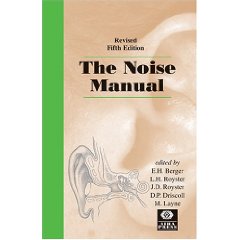Confessions of a Certified Industrial Hygienist (CIH) Examinee
 OHShub.com interviews recent successful examinees of the Certified Industrial Hygienist (CIH) exam administered by the American Board of Industrial Hygiene (ABIH). The resultant text is as follows:
OHShub.com interviews recent successful examinees of the Certified Industrial Hygienist (CIH) exam administered by the American Board of Industrial Hygiene (ABIH). The resultant text is as follows:
OHShub.com: When did you decide to take the CIH exam?
Examinee: I decided in 2003 to make it a goal of mine to obtain the CIH certification.
OHShub.com: When did you obtain certification?
Examinee: I actually obtained certification in May 2010.
OHShub.com: What is your current career field and how do you feel it prepared you?
Examinee: Currently I am in the consulting field. I feel that it (i.e. being a consultant) prepared me by having the ability to complete a multitude of traditional IH projects. The great thing about being a consultant is that there is always something new and fresh in meeting the needs of the client, which exposes you to a variety of the traditional “IH rubrics”.
OHShub.com: How long had you been in the IH/Safety career field when you sat for the CIH exam?
Examinee: Less than 10 years. I believe it was actually 9 years. While you can take the test after 5 years, I have always personally regarded the CIH designation highly. I felt that it was important and wanted to have a certain “skillset” prior to sitting for the exam.
OHShub.com: Are you saying that you did not just want to have a “certification” but wanted to be able to exemplify the characteristics of most CIH’s in the field?
Examinee: Exactly. That is precisely my thoughts and feelings.
OHShub.com: What was/is your work/career-life like?
Examinee: I consider myself very fortunate to have a very well qualified mentor (who is a CIH) and excellent IH support staff around me. Personally, I feel that it would have been much more difficult to obtain such a high level IH skillset without those continuing resources.
OHShub.com: Personally, how many hours do you think you studied in preparation for the CIH exam?
Examinee: Great question. But one that I thought about many times after many months of studying. I’d imagine that I studied somewhere in the range of 700-800 hours in all. Granted, this was over a few years. However, over the final year leading up to the exam, the final breakdown was probably somewhere in the range of:
- > 12 months out = 120 hours
- 12 – 6 months out = 200 hours
- 6 – 3 months out = 200 hours
- 3 – 1 months out = 120 hours
- < 1 month out = 60-90 hours


